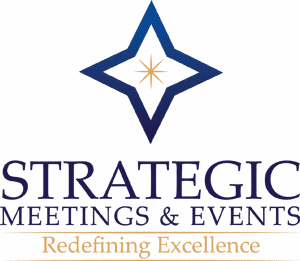31 Ways to Create a Lucrative Sales Funnel
BY ALEXANDER HOWARD
The “perfect” sales funnel is always changing. It no longer resembles a cone, with the large lip representing the top and the tiny exit point representing the bottom. It now resembles something closer to an hourglass. You can no longer stay satisfied making that final sale. You need to consider referrals, KPIs, and the paid tracking tools that make your business (and life) easier.
These are just a few of the criteria covered by The New Sales Funnel, one of the eleven invaluable courses offered by CommissionCrowd’s very own Jessica Magoch. Jessica is an award-winning sales expert who’s helped startups and Fortune 500 companies with their business strategies and implementations. Among her many accolades, she’s the CEO of JPM Sales Partner and was recently crowned Sales Expert of 2016 by Fit Small Business. Now she’s teamed with CommissionCrowd to offer an exclusive training program for becoming a master at sales.
In order to celebrate Jess’ new program, we’ve reached out to some of the industry’s most influential voices to get their tips on how to improve your sales funnel. So whether you’re just starting a business, struggling to reduce your churn rate, or just eager to stay on top, these pro tips will be of interest to you.

1. Make Your Needs (and Your Skills) Known
Christy Lamagna (President of Strategic Meetings & Events) @SMEChristy
It’s amazing what people can get when they ask for it clearly, concisely, and confidently. We often believe that clients will recommend us just because they know what we offer, but that’s often not the case. You need to remind people who our clients are and ask who they can introduce us to. Once you do that with regularity, balancing appropriateness with the ask, things will start to happen. Incentives can go a long way, so long as you can afford them. I’m currently offering up to $10k to anyone who introduces me to the corporation that becomes my next client. That offer, along with a clear description of who my ideal client is, has inspired a tremendous response.
The bottom line? Make your needs known, your skills evident, your willingness to reciprocate genuine, and your thanks profuse. Good things will follow.

2. Ten General Principals
Jonny Cooper (Founder of TheSuccessParty.com) @thesuccessparty
There’s no one-size-fits-all funnel, but there’s certainly a few general principles you’ll need to learn. These rules apply whether you’re selling dog food, holidays to the Canaries, or teeth-whitening strips.
- It’s called a funnel for a reason: it’s much wider at the top than at the bottom! Find a way to stuff many more leads in the top than you need for sales out of the bottom.
- Build layers. It can take up to six interactions before your prospects trust you enough to buy. Offer services and value at multiple points before asking them to spend any money.
- Create suspense. Make your early messages exciting and intriguing with your subject lines and snippets. Imagine you’re sticking your head inside your prospect’s door and saying, “Hey, come look at this!”
- Strut your stuff. Whatever you’re selling, create some amazing content for high on your funnel to show what you’re good at. Product videos, testimonials, and links to guest posts you’re featured in can all help draw prospects in.
- Repurpose your message. You want your prospects to recognize you wherever they find you. If you’ve written a hell of a blog post (and you really should at some point!) then reuse the content in a webinar, a podcast, or a series of tweets and emails with the same core.
- Start conversations. Asking prospects to fill out a survey, take a poll, join a group, or retweet in return for some free value will help to you get inside their heads and push them down the funnel.
- It’s all about them. Use your conversation to discover the needs, wants, and fears that drive your clients to buy. From that point, there’s no need to oversell you anymore. Just solve the problems they’ve told you about and they’ll love you forever.
- Automate the hell out of it. If you can do it online, someone’s found a way to automate it. From social tools to email platforms to funnel-builders and autoresponders, there’s no reason to sit bleary-eyed into the small hours of the night. Leave that to the hardcore gamers and focus on building value for your customers and the life of your dreams.
- Focus on the failures. Look for your prospects that fell at the last hurdle, abandoned the cart, canceled their subscription, or returned the goods. These are statistically the easiest next sales. Show them some real love and get them back in the funnel.
- Be boring. Don’t reinvent yourself with every campaign. What worked before will work again. Funnel optimization and evolution are all you’ll need to ensure longevity.

3. Don’t Stop at the Sale
Laura Robinson (Digital Copywriter and Content Marketing Strategist) @worditude
Your sales funnel shouldn’t end after the purchase. Keep communicating with your customers so you can:
- Gather feedback that will help you get even better at what you do.
- Get soundbites of love to use as testimonials on your sales pages and social media.
- Convert them into raving superfans who do your marketing for you!

4. Numbers and Emotions
Janice Dru (Board Member at Inkwhy, Inc.) @Inkwhy
There are two keys to perfecting your sales funnel: numbers and emotions (also referred to as technology and people). In terms of achieving numbers, set up automated systems (implement great technology) that let you work more efficiently and track your data to make sure there isn’t any leakage. In terms of addressing emotions, prepare the right messages and images that appeal to your target audience (remember that they’re real people). Then go back to the numbers and technology A/B test or apply more complex multivariate testing and predictive modeling to figure out exactly what resonates with your audience.
Be wary of technology pitfalls. These include you emails going to spam, leads not entering your system, coding errors in your messages, and automated programs failing to do their jobs. Conduct a full diagnostic of your digital presence and look at your competitors’ positioning to figure out if they’re eating your own lunch. Ask yourself if you’ll make more progress by improving your technologies or enhancing your digital approach.
Understand emotional factors. People become biased by their relationships. They dislike being pressured into decisions (but also react to urgency, and have different preferences for how often they’re contacted. Keep track of where your audience is coming from so that you can adjust your focus. Getting praise for your products and services is usually the best way to earn new and repeat clients. Work closely with marketing, customer service, and product experts to ensure you have the tools and resources to move through the different phases of the sales funnel. These stages include:
- Awareness (websites, brochures, broadcasts, and events)
- Interest (product demos, samples, and testimonials)
- Evaluation (competitor research and comparison grids)
- Decision-making (pricing, quality, and guarantees)
- Purchasing (proposal templates, sales tracked by a customer relationship management system, and marketing communications and workflow feeds)
- Re-evaluating (customer satisfaction surveys and Net Promoter Score)
- Repurchasing (more testimonials and improved product offerings)
The internal employees and contractors at your company can also be great resources for getting referrals and spreading the word about your products and services. Create an engine with your entire company (including HR, finance, marketing, customer service, and product management) in order to drive the effectiveness of your funnel. Good luck!

5. The Seven Day Tipping Point
Justin McGill (Founder & CEO of LeadFuze) @Jus10McGill
Different businesses can have dramatically different sales cycles. Service-driven businesses face different challenges than their SaaS counterparts. I’ve owned both but will share my insights regarding LeadFuze (a SaaS company) for the sake of this article. My company allows people to buy in whatever way they feel comfortable, whether that’s signing up and watching a demo, initiating a live chat, or making a phone call. However, we drive everyone to our app through a single landing page. This page allows visitors to interact with the app and then leads them to the sign-up form. Once they sign up, they get access to chat, demos, and more. It also creates an opportunity in SalesForce.
From there, we already have our stages set. A trial member is most likely to convert into paid within the first few days of signing up, so our onboarding process with Intercom provides heavy initial content. We’ve identified day seven as a tipping point, so we give prospects a time-sensitive special offer to try and convert them. After a couple of weeks pass, our goal changes from trying to sign them up to learning why they didn’t sign up. This feedback ensures that we still get value.

6. The Great Retrace Strategy
Michael Maher (Global Real Estate Consultant)
Communicate with every person in your strand of referrals. Say Joe(1) refers you to Jeff(2) who in turn introduces you to Cindy(3) who recommends your services to Janet(4). You should call Cindy(3) once you get an update on Janet(4). Then you should call Jeff(2) to express appreciation for connecting you to Cindy(3) before calling Joe(1) and filling him in on everything that’s happened. There is enormous, subtle power to this strategy. Don’t spend a penny on personal advertising. Don’t do personal promotion. This is how you build referrals and relationships. It’s about focusing on people and letting the numbers take care of themselves.

7. Focus on One Step at a Time
Steven Benson (CEO of BadgerMapping.com) @SteveBenson
Think of your sales funnel as one big lifecycle and break it up into many small steps. The top of the funnel consists of people exposed to your business, followed by engaged leads, then trial users, then opportunities, then sales, then finally customers you support and help make successful. Evaluate each stage, estimating how many people go in and exit them. Start with your number of new leads. New leads don’t translate directly into cash in the bank, but they do provide a forward-looking projection of where your sales numbers can go in the next month. Then look at your conversion rates and how they’re trending. This is a great way to measure the performance of your onboarding team. You can also evaluate your different types of prospective customers and who typically makes a purchase.
There’s an obvious temptation to focus on each of your reps’ closed businesses, and while everyone measures this “bottom of the sales funnel” metric, a lot of businesses and managers place too much emphasis on it. A lot of people tend to overlook the part that is actually below the “bottom of the funnel”, or how many existing customers paid more money than last month (up-sells) and how many paid less (downgrades/churn). Looking at churn by customer type can give you a great idea of which customers are the most valuable in the long run.
In my experience, people tend to overvalue the top of the funnel (their number of leads) and the number of opportunities that go to closed business. But there are often big opportunities in the middle and bottom of the funnel. It’s hugely important to work with your customers and make them successful with your product or service. By focusing on customer success, you can increase your conversion rate and reduce churn. Satisfied customers lead to a higher number of referrals. And this number has outsize importance, as referred friends and colleagues are a good indication that your customers are satisfied with their experience.

8. Use it!
Janet Efere (Sales Trainer and Coach at Tadpole Training) @JanetEfere
Check your sales funnel every day. It can be a powerful tool, but only when properly used. Keep a format that enables you to check, update, and get stuck in it! Your sales funnel is absolutely one of your most important tools for long-term sales success.

9. Never Get Complacent
John King (Head of Marketing for 2020 Legal Limited) @JohnRDKing
There’s no such thing as the “perfect” sales funnel. Perfection suggests that there’s nothing more to learn, develop, or change, and most will recognize that for what it is: complacency. Even so, the pursuit of perfection is honorable work. And getting there takes strong, well-understood foundations. You’ll need to understand your customers’ needs, wants, ambitions, and day-to-day struggles. This is vital to framing your product, service, and offer in terms they can relate to.
Second, take the time to understand your customers’ journey. Expensive marketing software and advertising are pointless if you don’t understand how things like the buying cycle or automation have an impact on the process. Timing and message relevance at key points of your research, and decision-making stages are large parts of your battle.
Third, you’ll need to appreciate sales dynamics. Marketing and sales must converge here. Your marketing research will need to agree with sales’ “on the ground” findings in order to build a mutually agreed-upon picture of your customer. Then, analyze your past sales data and lead history in order to assess the quality of leads and whether you’re collecting the right information on your prospects. Are you getting enough information? Is it enough to qualify as a lead, or is it merely an indicator of interest? You must build a concrete framework for ‘lead’ categorisation if you’re going to successfully nurture these indicators into future sales.
Measure the metrics that matter. Take pains to determine indicators of interest, leads, marketing qualified leads (MQL), and sales qualified leads (SQL). Most prospects who come with senior job titles and provide correct contact details will become leads. But what can marketing do to qualify a lead’s potential? Is a company in a sector or vertical that you serve? Do their turnovers (or profits) mean they can afford you? Does your offering solve a recognized need? Is your prospect in a senior enough position to influence a buying decision?
What about sales? How do they convert an MQL into an SQL? Your marketing and sales wings should move these prospects down the funnel sin order to achieve the perfect’ sales funnel. Some board-level backing can be vital to unifying commercial forces who are at odds with one another. The key then is collaboration and a mutually agreed-upon model for collecting, categorizing, and progressing great leads in a way that stands up to data-driven scrutiny.

10. Monitor as Often as Possible
Stella Mikraki (Head of Marketing for Moosend) Moosend.com
The perfect sales funnel is one that constantly evolves. Marketers should always monitor the metrics that change cold-traffic followers to warm leads or even buyers. As leads move along the purchasing process, marketers should make meaningful improvements to each of their metrics. They should also use A/B testing to pinpoint what changes result in increased conversion rates and other ratios. When designing and building a funnel, you need to take into account several factors including your target markets, what your lead magnet will look like, the stages of your funnel, your landing page, and your email follow-up sequence. Still, designing and building a funnel is usually easier than streamlining it. You design it to accommodate your marketing strategy, follow best practices, and resonate with your business. Then comes actually building it, which might require web designers or one of the many DIY tools you can find on the Internet.
But the most important and difficult part is monitoring as much relative data as you can. Although it can be quite a challenging task, tracking traffic and conversions at each stage of your buyers’ journeys is critical in your search for the perfect funnel. These metrics need to be tracked separately for different traffic sources and ad creatives. That way you know which campaign converts better. You can also use custom UTM links to track complete funnels you’ve set up in Google Analytics so that you absolutely know which campaign brings the highest ROI. Other tools you’ll need to use might include email marketing platforms with marketing automation, website trackers and reporters, thank-you pages, sales pages, a heatmap for tracking visitor behaviors on pages, and an exit pop-up that gives you the chance to catch visitors leaving your pages.
Creating the perfect sales funnel means testing and tweaking for continuous improvement. If you are just starting with a new campaign, record everything and see what works best for your business. Then aim at improvement every time you start a new one.

11. Beware of Customer Inertia
David Priemer (Vice President of Sales at Influitive) @dpriemer
The single biggest challenge modern sales teams face is inertia. Inertia, or status quo bias, is the tendency for companies to employ the same practices, policies, and technologies they’ve always used unless a large enough disruptive force causes them to change. If you want a healthy sales funnel, your approach and messaging must disrupt your target buyer’s inertia early and often. So what does inertia sound like? Salespeople are all too familiar with refrains like “that’s not a priority for us now”, “I don’t think we have the money for that”, and “what we’re doing now isn’t perfect, but it’s working for now”. These are all manifestations of business inertia. “Software? Technology? Process change? Don’t need ‘em! We can more or less get by with what we’re doing.”
But there are signs of hope! Every now and then, our sales and marketing efforts are compelling enough to break through our target customers’ armor and disrupt their inertia. Compare a buyer’s journey to the mercury in a thermometer. The zero mark represents a buyer with no interest. Ten describes a raving advocate, and eight is the level of interest required to make a purchase. Now, suppose that the average buyer enters your sales funnel with an interest level of two. That means your sales and marketing efforts need to ratchet buyers up six levels before converting them into customers. Certainly not impossible, but that large inertial gap can result in a longer sales cycle and a high-calorie conversion exercise. But what if you could inject buyers into your funnel at a six? The smaller internal gap would provide a much more favorable starting point and gateway to higher conversion rates.
So how can higher levels of engagement be achieved? In the spirit of fighting science with science, some of the best sales and marketing organizations in the world use tactics rooted in basic psychology and human behavior to overcome buyer inertia and generate higher levels of lead interest. Invoking reciprocity, establishing credibility, leading with values instead of products, adopting a customer-centric approach, and refining your pitch can all be used to help your company reduce the status quo bias for prospective buyers. Whichever tactic you use, be conscious that inertia — the true enemy of a world-class sales funnel — is a powerful force that must be met with a thoughtful, customer-centric approach.

12. Know Your Customer’s Personality Type
Christopher Van Buren (Founder of LaunchMoxie) @healthygreenguy
Speak to your customers’ personalities. If you don’t know anything else about your visitors, at least know which of the four main personality types they fit into. And you can speak to all four types in your marketing copy and brand messaging.
Drivers
Drivers are the active, take-charge people. They get the job done and tell others what to do. They’re driven by the need to save time and money. So, when communicating, make sure that one of your key points is about how much time and money they’ll save with your product.
Phlegmatics
These are the relationship types. They are driven by the need to belong and strive for connection and acceptance. When communicating, emphasize how “others just like you” are using your product and use phrases like “join us” and “form a deeper connection”.
Expressives
It’s said that expressives never let the truth get in the way of a good story. These are the socialites and performers among us, and their primary desire is to have fun. Emphasize how much fun they’ll have when using your product or service…and be sure to tell them a good story.
Analyticals
These thinkers and calculated decision-makers are driven by the need to do the right thing. They strive to save face and protect their reputations. Writing to analyticals involves adding testimonials, facts, figures, data, and supporting documentation. But also make sure to emphasize how smart and safe your products are.
Ideally, you’ll be able to target all four personality types at all times. But dividing them into groups of two can also be useful when you need to talk to two groups at the same time. Follow these guidelines:
Drivers and expressives are both extroverts.
Phlegmatics and analytics are the both introverts.
Drivers and analytics are driven by thoughts and beliefs.
Expressives and phlegmatics are driven by feelings and emotions.

13. Change Your Relationship Dynamic
Sabri Suby (Founder and Head of Growth for King Kong) @sabrisuby
You need to know your market and customers. You need to figure out your customers’ desires, fears, hopes, wishes, and dreams. You need to move beyond the obvious and work out how your audience thinks, feels, and acts. Research. Search forums, comment sections, reviews, and social media to understand the language your audience uses. Look for their concerns and questions. Identify trends. Organize your research into common themes and concerns. Doing so will help you identify the gaps and shortcomings of your products and services already on the market. Fixing these gaps is key to creating an offer that’s too good to resist and leaves your competitors in the dust.
Once you’ve spent weeks researching, you’ll be ready to build your sales funnel. Start with a ‘high-value content offer’ lead magnet. This can be in the form of a free report, video training, webinar, cheat sheet, etc. Use it as a hook to get potential customers into your funnel. Once customers start entering your funnel, you’ll want to continue educating them and offer solutions to their hopes, pains, and fears that you already identified in your research phase. The highest converting educational offer you can provide is a webinar. Having prospects sit through a 90-minute webinar greatly assists your onboarding process. You want your prospects to live and breathe your brand mantra.
The goal of your funnel is to change the dynamics and psychology of your relationship with your prospects. Instead of chasing clients, make them chase you. Your systems – not you – will do the hard yards following up and delivering content that educates and pre-qualifies your prospects. By the time you or your sales team speaks with them they’ll already be ready, willing, and able to do business.

14. Start with Your Home Base
Taneil Currie (Business Strategist at Tenth Concept) @TaneilCurrie
Work with what’s in your control. Update everything – your website, your social media, and your blogs – and make sure they stay current. Take visitors on a journey. If visitors comes seeking expert education from your site, ideally they’ll leave after making a sale. Have clear calls to action based on your desired end result. Make transactions as easy as possible.

15. The Jigsaw Approach
Brian Marsh (Sales Director at Futurepump) LinkedIn
There isn’t a salesperson alive who hasn’t heard of “sales funnels” and how they’re all about the numbers That’s a true statement technically, but what about the variables? Do you do the same thing for every sales transaction you carry out? Do your customers get the benefit of the same high-quality, detailed presentation? Or do you have your off days?
Let’s assume that you’re the sort of salesperson who properly qualifies your prospects. You wouldn’t drive 100 miles to meet a customer you know nothing about. All of your sales visits start at the same point: you know your customers’ pain points, what you can do for them, and why they need your product or service. You meet and greet your prospect and go into a sales presentation that you’ve crafted from years of experience. As an experienced salesperson, you know this presentation inside and out. And that can be a huge problem.
Holding a sales presentation is like doing a jigsaw puzzle. You’re building a scene one piece at a time until your client can see the full, glorious picture. But recreating the same boring thatched country cottage every night can get pretty boring. After a time, you’ll realize that putting the jigsaw away carefully can keep a lot of the pieces together and make the following night that much easier. This is a bad habit that sales people fall into. They forget that their prospects haven’t seen the jigsaw before, and instead of building it piece by piece they put down big chunks and aim to build it quicker. This is a huge disservice to your product, company, and prospect. Of course, your prospects will say the right things – most of them are polite after all – but will you have given them the full picture? Will they understand the full implications of your product? Will they really become the good prospects you hoped to put into your sales funnel? Probably not!
The prospects in your sales funnel should present genuine opportunities for sales. Fail at your job, and those prospects will become just numbers, making your conversion ratio worse rather than better. GIGO is an acronym in IT that refers to data being fed into a computer. It stands for Garbage In, Garbage Out. Failing to present at your absolute best makes you guilty of putting garbage into your sales funnel, and you know what you will get out. Be true to yourself, do your best every time, and you’ll build a sales funnel you can be proud of.

16. Establish a Point of Contact
Dustin Montgomery (Founder of Dustin Montgomery SEO) @DustinMontSEO
The perfect sales funnel starts with the perfect audience. Drill down into your audience and understand their position as best as you can. The more you can prequalify your audience, the better chance you’ll have at success. Targeting the same people on different platforms and networks can make a big difference. Once you have established your audience, examine your competitors’ landing pages. The longer you do this, the better of an idea you’ll have about what’s working for them. Chances are that some of your same audience members have seen them, so use this information to stand out from the crowd.
Ensure that your call to action can create a point of contact. The best way to do this is by offering something of value. Traditionally. a point of contact would be an email address, but you might find something better depending on your demographic. Always meet your customers in their comfort zones. Then, once you have your point of contact, craft the rest of the funnel. The number of steps here will depend on your demographic and how warm or cold your clients are. If they are cold, you’re going to need to demonstrate your authority and highlight their need. If they are warm, you may only need a few emails before presenting another funnel or even a purchasing opportunity.
It’s important to note when prospects opt out of email. This will help you continually shape and optimize your funnel. The same goes for when people pull the trigger on a purchase. At this point, it’s important not to let your leads die out and instead keep following up for as long as you can without being annoying. If nothing else, keep leads on your general mailing list so they keep receiving content.

17. Don’t Manage Your Pipeline by Hand
Gene Caballero (Co-founder of GreenPal) @gene_caballero
Use tools that keep your potential customers in the loop in regards to new products, content, and even reminders of industry events. Biweekly or monthly newsletters can keep prospects interested and on your radar. The more relevant content that you can feed potential customers, the more likely they will be to trust you and purchase from you. There are several tools that can be used to load up new contacts and add them to your newsletter rotation. By doing this, you can also see who has clicked on what and then tailor your future content to the emails that received the most opens or clicks.

18. Follow a Few Simple Steps
Jeff Goldberg (Jeff Goldberg & Associates) @jeffgprospeaker
The perfect sales funnel? That’s easy! (Said no one ever.) But while it’s not easy, it’s certainly doable if you use a few key steps.
- Create an ideal client profile (ICP). Identify what good clients looks like in order to be able to recognize them.
- Develop a prospecting plan. Cold calling? Email? Social Media? All of the above? You have to have a plan in order to get into a conversation with your ideal potential customers.
- Know how many prospects you need at any given time. You need to know what number of your prospects turn into customers and how many you have in your pipeline if you want to achieve your goals.
- Use a pipeline management system. Create a system to identify where prospects are in your sales cycle and have a way to encourage them forward. I offer clients a new product called SalesStar, which not only accomplishes this but also coaches them before sales calls. But no matter what system you use, use it religiously to move your prospects through the sales cycle and towards your closed column.

19. Get Your Ratios Down
John Lyon (CEO and founder of Logisco) @LogSco
“Sales is a numbers game.” If I got a £1 for every time I’ve heard that over the past 25 years, I’d be very rich indeed. All in all, I think it’s far too generic of a sentiment. But when it comes to creating and implementing the perfect sales funnel, I always start with perfecting the ratios of opportunities to closes. And in that instance, it absolutely is a numbers game. Here are four steps that I swear by:
- Begin with the end in mind (your goals/targets) and then figure out the quantity and quality of opportunities necessary to accomplish them. The perfect sales funnel relies on getting these numbers and ratios spot on.
- Focus on the right quality and quantity of your opportunities. Ensure that whenever prospects drop off your sales funnel (regardless of where) that others are ready to replace them.
- Manage your sales funnel on a daily basis. It should be the first thing you review each morning and the last thing you update at night.
- Be ruthless with your sales funnel. If an opportunity leaves or stays stagnant on a stage, correct that without delay. Never allow your funnel to become untidy or inaccurate, as it will only distract you from achieving your goals.

20. The Nine Steps
Peter Cappiello (National Vice President of Sales for PrimePay) @PeteCappiello
In today’s buyer-centric environment, sellers must navigate multiple channels if they’re going to create a successful funnel. Here are my nine tips for success:
1) Know what “good” looks like. Identify your high probability prospects and focus on them. By not wasting time on prospects that aren’t the right fit you can maximize your selling time. Develop and provide relevant content (testimonials/articles) to buyers and your win rate will improve.
2) Sales may be the engine, but marketing drives the bus. The buying process happens well before a sales executive ever delivers a pitch. Effective sales funnels are reliant on sales and marketing working together. If they’re out of sync, lead conversion will also be off.
3) Lean and mean. Keep lean pipelines once opportunities begin making their way through your funnel. Don’t inflate numbers for a manager review. Operate in reality and focus on real opportunities to close at a higher win rate. But lean doesn’t mean thin. Concentrate your efforts while still identify a pipeline twice as large as your objective.
4) Scrub your pipeline DAILY to keep it lean. Work piles up. Don’t shy away from this activity.
5) Attack from all angles. An omnichannel approach, which enables sales and marketing to chip away at your prospects, will offer greater results. Allow marketing to keep your prospects warm so that you can focus on closing.
6) No next step, no opportunity. Every opportunity in your funnel or pipeline must have an actionable next step. Identify the next item that will move prospects through your funnel and towards the close.
7) Know your numbers. What is your average win rate? Average sales cycle? Average deal size? Without these key indicators, it’s impossible to identify a strong, successful pipeline. You can determine your success benchmarks once you know how many opportunities you need to enter your pipeline.
8) Identify and work your centers of influence (COIs). Pharmaceutical companies are masters at this. Why sell to a patient directly when you can sell through doctors? To create strong COIs you must first know who they are. Focus on attracting and building a database of COIs that you can target consistently. Speak their language and offer insights that can help them grow. Let them see you as a resource.
9) Always be connecting. I believe in Dr. Ivan Misner’s 29% theory: “29% of the world are separated by less than six connections.” Great business professionals constantly connect and build relationships. You need to maintain visibility within your community, social media, and most importantly, your field! Become a part of your community through networking, nonprofit organizations, and chambers. Build a reputation for following up and following through and your network will generate at least 25% of your funnel every month.

21. Be Your True Self
Joe Templin (Managing Director at The Unique Minds Consulting Group)@TheRealHeadGeek
The perfect sales funnel can’t truly exist because we’re only human. Instead of trying to master sales techniques or deus ex machina marketing, try something more fundamental and effective: be true. Be true in the sense of the Scottish psychologist RD Laing.
As Dr. Stolk and I analyzed in our book Choices: Creating a Financial Services Career, acting as one’s true self means avoiding fake discussions and pleasantries that lead to much hot air and little action. False-self to false-self interactions rarely lead to lasting relationships, as their foundations are built on lies. Only true-self to true-self discussions can lead to trust-based relationships that are profitable for both parties. An analysis 10,000 professional salespeople across multiple disciplines showed that agents deploying this technique closed three times greater than average. Truth equals power.

22. Choose Metrics that Matter
Colleen Francis (Owner of Engage Selling Solutions) @EngageColleen
You can’t get outstanding sales results without good data. But data is meaningless if you can’t understand what you’re measuring or how it supports your goals. There are two sales metrics you need to pay attention to: leading indicators and lagging indicators.
Leading indicators
Leading factors make up everything before the sale. They’re at the top of your sales pipeline and define how capable you are at opening opportunities. Your organization should keep track of several metrics for leading indicators, and the most important one is called “overall gap to growth”. This is defined as the gap between where you are and where you need to be to hit your next sales goal. Defining your overall gap to growth also defines the work you need to do for the rest of your sales period (e.g. the next week or the next month). How much you shrink the gap defines how well you’re performing with leading indicators. Leading indicators include all of the activities and sales stages that happen before a proposal is sent out. With that in mind, other metrics in this area must include:
- The ratio of newly qualified opportunities to what’s required to hit your target.
- How long it takes to convert leads into opportunities, separated by marketing sources.
- How many attempts it takes to convert leads into opportunities, separated by marketing sources.
- How long it takes a successful opportunity to move through the top half of your pipeline compared those you lose.
- The conversion ratios of each stage leading up to the proposal.
Lagging indicators
Lagging Indicators are the metrics involved with getting opportunities signed. They’re also where sales managers most often go wrong. Managers forget that making the sale is a lagging indicator rather than a leading one. Making the sale only tells you what you did right in the past. To measure how effective you are at closing, you’ll need to look at:
- Your closing rate (conversations to sale). A healthy average is around 35%.
- How long an opportunity takes to close. Measure both wins and losses, determining whether it’s taking you longer to win or lose a deal.
- Your churn rate, or how many customers leave you every year.
- Your cross-sell rate. How much more does each customer buy from you per year? Think of sales data and sales metrics the same way that athletes look at nutrition. Be selective with what you’re consuming. Be meticulous when measuring meaningful outputs and you’ll gain valuable insight for helping your sales organization grow better, faster, and stronger.

23. Take Full Advantage of Twitter
Mike Kawula (CEO of Social Quant) Social Quant’s Website
The perfect sales funnel continuous runs and never empties. The worst thing sales agents can do is have their funnels run dry because they didn’t fill them with continuous leads. Here’s a three-step strategy, using Twitter, that ensures you never run out of leads:
- Optimize your Twitter profile (takes about 30 minutes). In order to optimize your Twitter profile, you’ll need to:
- Write a great cover that establishes authority and lets people know what you do in five words or less.
- Use a high-quality picture of yourself (not your company logo) and keep it updated with how you look today (not back in college).
- Create a killer bio that’s both professional and personal (don’t use hashtags). You’ve got 160 characters, so fill them with good keywords.
- Link to either your company website, LinkedIn, or opt-in page.
- Create a pinned tweet for the top of your profile that people will see when visiting your page. Make the tweet great copy and include an image (GIF, video, or photo). This will preferably be for an opt-in in exchange for a prospect’s email address. Make it irresistible!
- Get eyeballs for your optimized profile (takes 0-20 minutes a day). Think of a few Twitter accounts that have more than 100,000 Twitter followers (including your potential customers). Think of bloggers, podcasters, influencers, tool providers, and authors. Go to advanced search and type these Twitter handles (without the @) and click on the “latest” tab. This will show everyone who’s actively mentioning these influencers. Follow 100-250 of them a day and anywhere between 10-20% will follow you back, with a large percentage clicking on your pinned tweet. You can outsource this to a company or spend 20 minutes a day doing it manually.
- Share 50 tweets a day. Now that you’ve built a following, you’ll want to keep up and get followers to visit your opt-in page or website. Create 100+ tweets and put use a tool that can continually circulate them every day. Studies have shown that those who tweet 50 times a day, compared to those who make just ten, receive 40 times the clicks. And that means more opportunities to increase traffic and leads for your sales funnel.

24. Seven Steps for a Highly-Profitable Sales Funnel
Alan McKenna (CEO and President of Business Acceleration Strategies)@alanmmckenna
- Create your big vision. High ticket sales are key to massive growth in revenue and profit. Estimate your business’ potential by projecting your clients’ maximum lifetime value.
- Identify your ideal clients. Outline their demographics. Understand your most profitable clients by listing their main pain points and desires. This makes enrolling them into your high-ticket program easy.
- Choose your profit maximizers. Design a clear ascension path, choose the products and programs for your high-ticket sales, and position yourself for best results.
- Hire and compensate the best salespeople. The best salespeople are those who already share a passion for what you do. The best way to find them is by looking inside your company or amongst your biggest fans. Here’s what to do:
- Start the sales process immediately. If possible, train someone already on your team.
- Create a roles and responsibilities outline. Include expectations and an outline for your ideal candidate so you can hire accordingly.
- Write an ad and email draft.The better your ad screen, the better hires you’ll attract, the more time you’ll save, and the more money you’ll make.
- Structure a win/win compensation plan. Commission-only works best.
- Create your lead generation system. Here’s what you’ll need to generate highly-qualified leads:
- Landing pages that relate to various prospect types.
- A qualifications page that weeds out anyone who doesn’t fit your ideal prospect profile.
- Segment the fastest-selling high-end offers using recency, frequency, and money (RFC).
- Drive your segmented lists with promo emails on various landing pages.
- Create your sales system. Offer your leads appointments for strategy sessions. Then use these sessions to create sales. The perfect follow-up system drives huge amounts of revenue. Here’s what you’ll need to achieve it:
- A precise follow-up strategy for booking appointments and closing sales.
- Appointment-setting emails, appointment-scheduling scripts, voice message scripts, and appointment confirmation emails.
- A well-crafted sales script that adds value through strategy sessions whether your prospects enrolls in your next-level offer or not. This script needs to guide prospects effortlessly to their next step, which is using your products or services to achieve results.
- Scripts for overcoming the most common objections.
- Post-session follow-up emails.
- Measure and manage your salespeople’s results. Create a simple sales stats report that gives you insight as to where your salespeople are doing well, where they have problems, and where improvements can be made. Track conversions and average revenue per lead. In order to increase conversions, you’ll need to optimize your entire sales funnel, refine your processes, and continue training salespeople. Remember the 80/20 rule, which says that for any given price point 20% of your clients will spend four times the going rate.

25. Strong Leadership and a Top-Down Approach
Janice Mars (Principal and founder of SalesLatitude) @JaniceMars
Creating and implementing sales funnels are two separate, distinctive disciplines. Here are five simple steps to a successful sales funnel.
- Talk to the right people. Communicate with stakeholders at the appropriate levels of their organizations. Different levels of an organization will have different priorities for spending their time, money, and resources. The higher up in the organization you go, the more strategic the need will be for your products and services (and the larger the deal). Gain a strong understanding of the goals of each level and ensure the linkage makes sense. If it does not, then ask more questions.
- Align yourself with executives. Getting in front of executives not only allows you to help solve problems and make their numbers, it also leads to larger deals that close faster. Understanding the needs, priorities, and goals of an organization is equally important to get the timing right. This enables you to build a sales funnel that directly aligns with your prospect’s goals.
- Let the process be your guide. Implementing the perfect sales funnel should be easier than creating one. Adhere to your established process by ensuring that all activities are completed at the right time. But more importantly, make sure your prospects are engaged at each stage. If they’re not, find out why.
- Keep a close eye on the deal. I often see well-created sales funnels fail because they weren’t actively managed and monitored. Many sales managers get involved way too late in the sales process, making it difficult to verify if their salespeople asked the right questions at the right levels and truly understood priorities and timelines. Sales managers must be effective coaches and ensure that their salespeople view the deal through their prospects’ lenses. Is the prospect engaged? Is the deal stuck in a particular stage? Should you spend more money, time, and resources on this deal or move on?
Get events in sync. Use an executive-level sequence of events document that helps drive collaboration with your prospect by clarifying your activities, responsibilities, and timeframes. Typically, you’ll want to work the key milestones backward from the date your products and services start delivering value. Create the document early in the sales cycle and modify it along the way to ensure everyone is marching to the same drum. Creating and implementing a perfect sales funnel takes strong leadership and a top-down approach to affect positive change.

26. Make Strategic Partnerships
Maura Schreier (President of Best@Selling) @bestatselling
Get help prospecting instead of prospecting by yourself. Your best prospects come from referrals. You want to identify people who can become your strategic partners. Start by determining your best prospects. Separate them by industry, location, revenue, size, and other criteria. Find companies that sell to these prospects but don’t compete with you. Tell these potential partners what you want to exchange referrals between your businesses.
Say, for example, you sell petroleum products to manufacturers. Those manufacturers buy hydraulic oil. Hydraulic systems require filters. Your company doesn’t sell filters, but you know someone who does. Contact the salesman who works in your area. Discuss which accounts you can introduce him to. Ask him to introduce you to the accounts he’s selling to.
And what do you do if you’re having trouble identifying strategic partners? Ask your customers who they also work with. Ask for their best suppliers. Meeting someone a customer is already working with makes for a strong introduction.

27. Use Your Best Clients to Guide You
Michael Johnston (Group Sales and Strategy Manager for the Schrole Group)
Take a look at your biggest sales clients using three types of profiles. First, find the biggest markets and industries. For us it was schools, so they became one of our best buyers. Second, look for the prospects who spend the most per purchase. I explained this to one client who typically dealt with SMBs but paid the largest amount by a single law firm. Third, look for the people that buy most often.
Learn why these prospects buy. Understand what they know that other, similar customers don’t. Figure out what triggers cause their purchases. Use several marketing tactics and an educational campaign for prospects similar to them. Then, look for partnerships that have similar best buyers. Check out other companies, services, and products your prospects came in contact with prior to choosing you and reach out to them.
Always be looking for ways to make it easy for your salespeople to engage prospects. Make your salespeople specialized in the problems your best buyers had prior to becoming customers.
When coming up with a sales pipeline, it’s helpful to break up the process into a series of smaller decisions. Don’t get tied up in the latest trends, but utilize the ones that make sense.

28. Implement Proper Analytics Tools
Lindsay Kavanagh (Digital Coordinator for seoplus+) @seopluscanada
You’ll need to track user activity before you can hope to gather effective information, measure readiness to convert, or deliver relevant content. Create site pathways to micro and macro conversions and document each one. This will allow you to separate leads according to where they converted and what information they were looking for. For example, when users sign up for e-books on social media, you can judge their interests and create ads and other initiatives accordingly.
Once leads enter your system, continue documenting their interactions with your business (emails, website, landing pages, etc). This will give you a better idea of how interested they are and when you should make contact. You can also cater your outreach to specific user behaviors. For example, if you observe a user browsing your social media services, you can reach out and offer a special social media audit and provide ways in which your business can help.

29. Start from the Bottom
Michael Babcock (Host of the Your Own Pay Podcast) Your Own Pay Podcast
Ask yourself: what is the ultimate goal you want your prospects to achieve? Map out every product, service, and step individuals will need to take along your sales funnel. That way, when it comes to handling tech, there won’t be any difficulties. And remember, every piece of content you put on the Internet is an entryway into your funnel.
Knowing what the bottom of your funnel looks like gives you the ability to produce content that addresses the questions that your customers need answered before they’ll buy your product. Use this tip, which I wish I’d heard when I was getting started: take it, use it, and grow with it.

30. Predict Your Customers
Norman Gluck (Sales Consultant) LinkedIn
The basic idea of a funnel is that the better you understand your potential customers, the more predictable they become. Of course, you’ll have already researched your prospects, their businesses, and how they relate to the products or services you’re proposing. The funnel is shaped by the following steps:
Attraction: Create a person-to-person link between you and your prospect. Establish verbal and visual “acceptance” through voice, mannerism, facial expression, personality, and attire. Create a base interest in your product or service.
Discovery: Engage your prospects with a brief conversation that shows your awareness of their business and how your product or service fits into it. Express your knowledge of their industry. Listen carefully to your prospects.
Find an issue: Use the information you gathered from the discovery stage to highlight issues your prospects are experiencing and how your product or service can benefit them. Be extremely careful not to place your prospects in an uncomfortable or defensive position. Speaking in third-party terms is often effective.
Propose a solution: The strategy works best when you present a solution that’s primarily to the credit of your prospect. Most prospects don’t like a narrative about your service saving or rescuing them, and can easily turn defensive or even confrontational. This, of course, depends on the interpersonal interaction and communication style you’ve established with your prospect.
Engagement/Sample: Once an issue or specific interest has been identified and understood, explain how you can offer either direct engagement and/or samples of why your product or service is effective.
Final overview: Provide a conclusive summary of the key topics and issues, the proposal (solution) suggested, and what assistance and involvement you can offer.
Decision: At this point, the best strategy is often staying silent and waiting for your prospect to respond. An alternative would be to ask your prospect if a certain step, time, or place would be agreeable to deliver your product or service.
Keep in mind that each prior component is entirely on the feedback you get from your prospects. They cannot be drafted as a map or planned like a list. You need to listen, observe, and understand your prospect’s business to yield the best and most effective results.

31. Find the Right Targets
Karyn Kopp (Speaker at Kopp Consulting) @ChiefDoorOpener
Maintain a consistent flow of new prospect relationships. Figure out which prospects deserve your attention. In my experience, most sellers spend at least 25% of their time with prospects who are unlikely or unable to say “yes” in any reasonable timeframe. One business owner named “Dara” told me she was frustrated by one of her prospects named “Rose”. Dara had invested a lot of time with Rose, between meetings, brainstorming sessions, writing and rewriting a proposal, and generally building up their relationship. I asked Dara what it would take for Rose to say yes. She told me the only way she envisioned Rose moving forward was if she cut her price in half.
Some prospects will never pay the price for your services. It doesn’t matter what you say, how much proof you provide, or what you guarantee. While other minds can be changed, it’s important to ask yourself if that long uphill climb is worth it. Alternatively, consider if your time is better spent with prospects who can’t wait to get started. In order to narrow down your correct prospect group, ask yourself these three questions:
- Am I offering the obvious solution to their problems?
- Are they willing to pay what I want to charge?
- Are they eager to hold a conversation and take the next step?
If you can check all three boxes, then your prospects are likely worth your time. If you can’t, then your prospects might still become part of your pipeline (situations can change), but perhaps on a less labor-intensive path (i.e. an email drip campaign). The most important thing is that you identify correct prospects early enough that you avoid misusing your time. Concentrate on creating the right sales message in order to attract good prospects and repel the wrong ones.
Let’s say your service is not the lowest-priced option on the market, but your best clients value quality over affordability. Those who agree with this philosophy will continue their conversations with you.Those who only value the lowest price will likely move on. The kindest thing you can do for your such prospects (and yourself) is refer them to a better fit. Sales is more fun and successful when you spend your time from the beginning working prospects who are likely to say yes.





